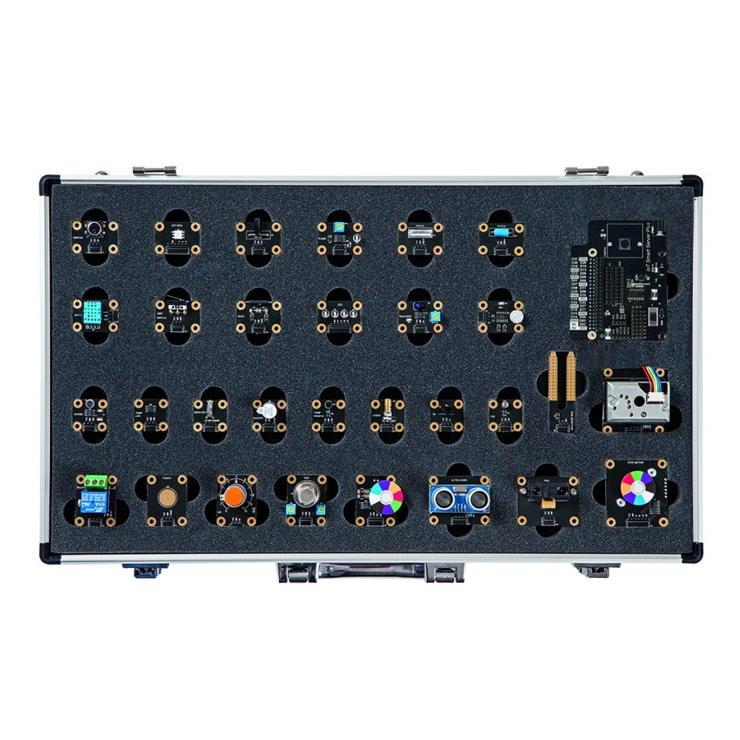Features of IoT Smart Server Plus • IOT-016
IoT Smart Server Plus consists of 30 kinds of sensor modules connected by high-performance edge servers and jumper cables, optimized for IoT application learning, maker and capstone design, and hackathon.
Provides a specially designed Pop library for the 30 sensor modules and Soda OS, which are high performance edge device operating environments.
Soda OS is a Debian-based distribution, with all the tools that Linux professionals love and open software for IoT applications, so they can be used immediately without building a separate system.
The high-level Pop library lets you implement real life ideas without complex hardware knowledge.
Soda OS supports automatic IP address assignment, distributed name resolution using mDNS, and network service publishing / discovery using DNS-SD.
It supports a wide range of languages including C/C++, Java, JavaScript, Node-Js, and more, including Python 3 and extension libraries such as numpy, matplotlib, pandas to extend to data science and AI applications.
It supports Google Cloud-based speech synthesis and voice command function and IoT application service using camera. You can learn Linux operations and Python programming, sensor control, and multimedia applications on a high-performance IoT edge server.
IoT Smart Server Plus • IOT-016
Training Contents:
Part I: Edge Device Development
• HBE-IoT Smart Server + and Soda OS
• Connecting Host and Edge Device
• Edge Device Support Software
• Python 101
• Desktop Environment
• CLI environment
• Linux 101
Part II: Sensor Programming
• Circuit Basics (charges, voltages, currents, resistors, capacitors, inductors, diodes, transistors, op amps, comparators, integrated circuits, electrical supply devices)
• Hardware Interface (Signal Type, GPIO, PWM, ADC, I2C, SPI, UART)
• WiringPi and Pop Library
• GPIO output device control (Led, Buzzer, DC Motor)
• GPIO input device control (Switch, Pir, Ultrasonic)
• ADC Input device control (Potentiometer, Sound, Cds, Thermistor)
• Reading multiple analog sensor values
Part III: IoT Application Technology
• Save the sensor value as a text file and draw a chart with Excel
• Collect sensor values and run multiple SQL statements
• WAV file playback and waveform output
• Use the microphone as an ambient noise level sensor
• Google text-to-speech converter
• Leverage the Google Assistant API
• GAssistant based user device actions
• Creates Stop Motion with camera and switch module
• Record whenever a human movement is detected by camera and PIR module
• Create a vehicle video recording device with camera and shock module
• Gesture detection system
• OpenCV and Matplotlib Visualization
• Capture video with OpenCV and PiCamera

